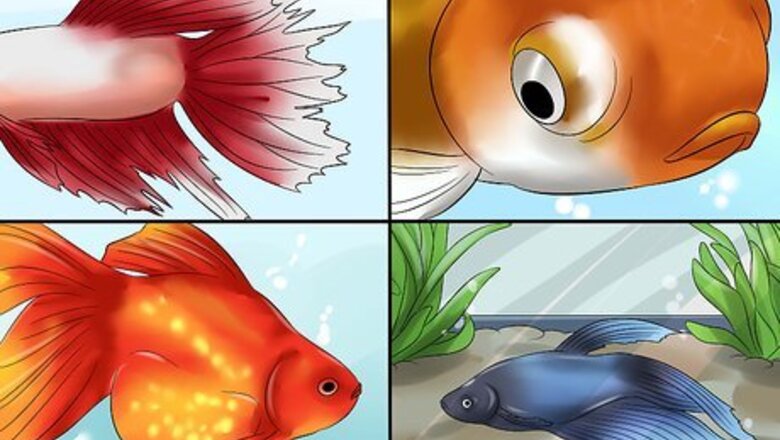
views
Identifying Diseased Fish
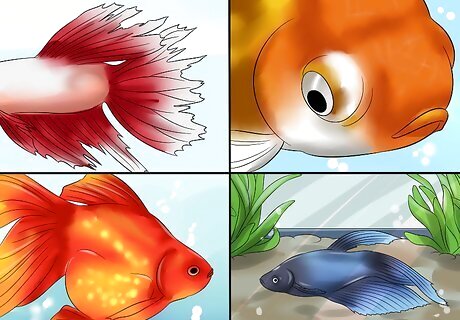
Recognize bacterial infections. Bacterial infections come with different symptoms that you may be able to identify through observation. These symptoms can include the following: Inactivity Faded color Frayed fins Bloated body Cloudy eyes Abscesses Open sores Red streaks through the fish's body Redness of the skin, fins, or organs Difficulty breathing Bulging eyes
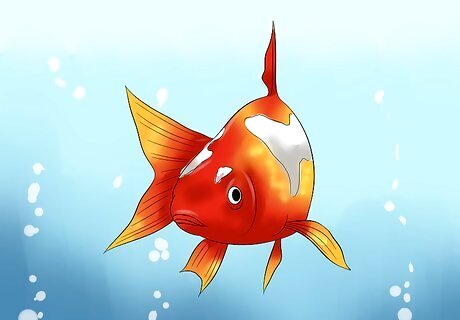
Recognize fungal infections. Fungal infections can be associated with other types of illnesses. The symptoms of a fungal infection could include the following: Strange swimming behavior including the tendency to dart around the tank Small collections of whitish material growing on the fish's eyes, skin, or mouth
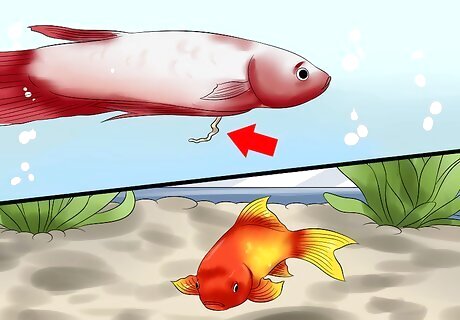
Recognize parasitic infections. If your fish has a parasitic infection, its symptoms will differ from those of bacterial or fungal infections. Some symptoms to watch for include: A lack of appetite A tendency to be inactive A film or unusual mucus on the fish's body Worms or spots that you can see on or in the fish's body Fast breathing Scratching
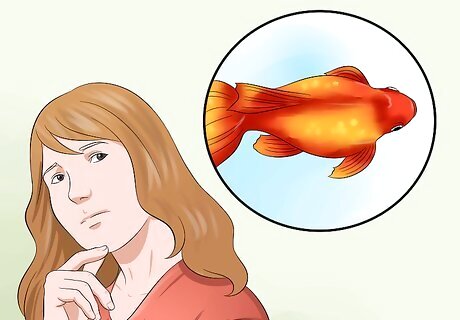
Recognizing other diseases. Some other diseases might be non-infectious, such as tumors, constipation, injuries, or even congenital abnormalities. Some diseases may be viral as well. Most diseases have treatments available, and proper filtration can help prevent recurrence of diseases whether the tank is freshwater or saltwater. If your fish purposely runs into objects in the tank or seems disoriented, it's possible that it's not able to maintain homeostasis and it's natural balance is off. This could be a sign of shock.
Setting Up a Hospital Tank
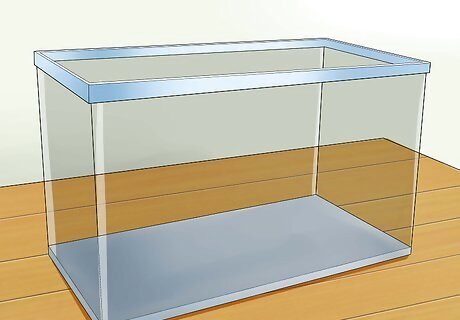
Find a tank to use for the hospital tank. The hospital tank can be an inexpensive aquarium or an older unit not currently in use as a display tank. Do not use substrate (sand or gravel) or live plants. A filtration system that does not use carbon should be used in the hospital tank because carbon may negate some medicines. Artificial plants may be used to comfort diseased fish. Other types of cover where the fish can hide may be comforting as well. The carbonless filter used should also be lower power in order to avoid disturbing the fish too much.
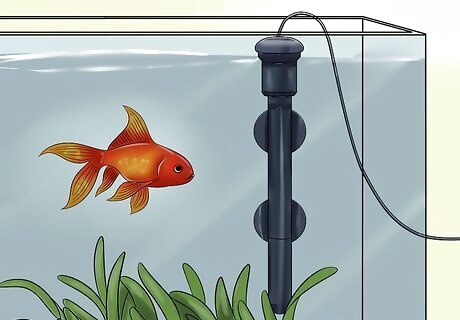
Use a reliable heater. The hospital tank's water must be kept at the appropriate temperature for your fish. Choose a heater that will not vary its temperature too much in order to keep the ailing fish comfortable and safe. Be sure to protect the fish from heater burns as well by blocking the heater from direct contact with the fish. This can be done with any kind of barrier to the heater, such as plastic mesh. Pet stores or aquarium specialty stores can recommend other options for heater barriers. Raising the tank's temperature might prevent parasites from replicating.
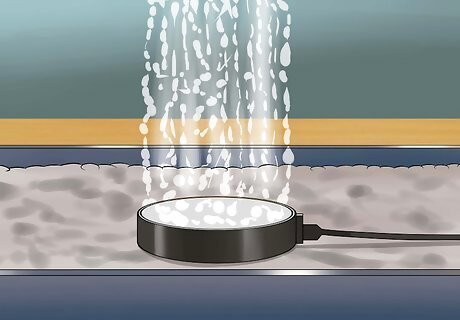
Use an air stone. An air stone in an aquarium can help replace oxygen in the water. This is particularly useful in a hospital tank because some medicines can reduce the amount of available oxygen in the water. Air stones are available anywhere aquarium supplies are sold.
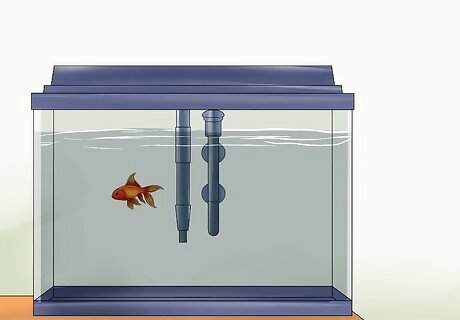
Keep the hospital tank in a dark room and dimly lit. Some diseases can be inhibited by little or no light, so keeping the aquarium minimally lit and in a dark room can help treat the diseased fish. This depends, of course, on the pathogen, but if your fish's ailment is one that needs light, keeping the aquarium dimly lit and in a dark room may help fight the disease. Check with an aquarium specialist at your pet store, aquarium specialty store, or a veterinarian to see if your fish's ailment can be inhibited via minimal lighting.
Treating Ailing Fish
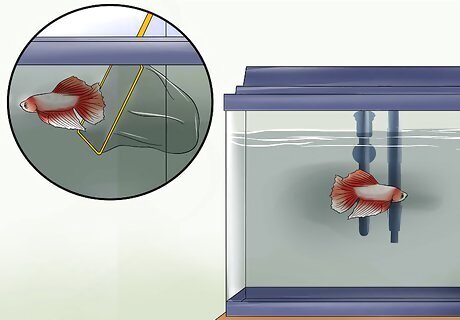
Move the fish to the hospital tank. Ensure that the hospital tank's water is as similar to the main display tank's water as possible in both temperature, water source, and regular additives, including dechlorination. Prepare two additional tanks or buckets of water of at least 2.5 gallons (9.5 L) that are also filled with water as close to the same as the main display tank as possible. Use a net to move the fish to the first bucket.
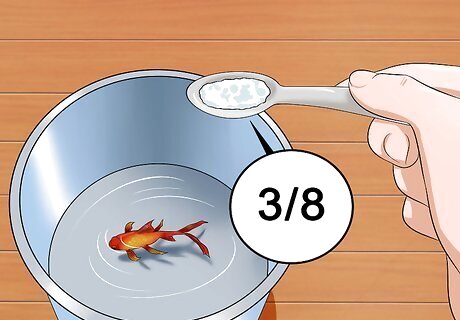
Add salt to the water. Add 3/8 of a teaspoon of salt per gallon of water to the first bucket every two minutes up to ten minutes. Move the fish to the next bucket of water and wait 15 minutes. After the 15 minutes have passed, add another 3/8 of a teaspoon of salt per gallon of water to the second bucket. Wait another 15 minutes and move the fish to the hospital tank.
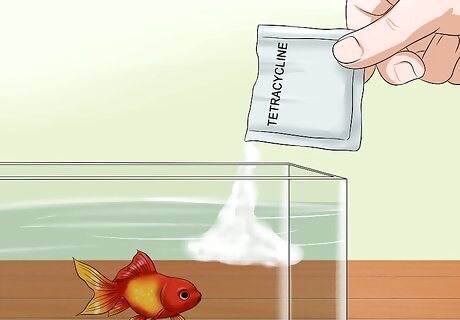
Treat the fish. Check online to help diagnose diseases. You may also want to secure the help of a veterinarian with fish experience to help diagnose. Once you have determined the type of disease the fish is stricken with, obtain the appropriate medicine. In the hospital tank, administer the medicine. Be sure to follow the instructions for the treatment you are administering.
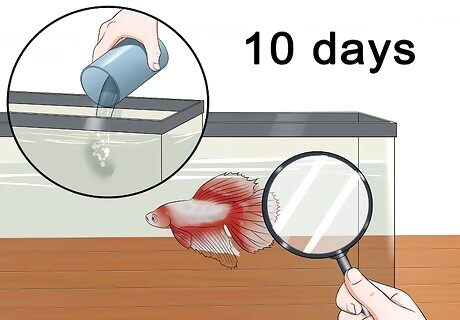
Monitor the fish for ten days. Keep the fish in the hospital tank for ten days during treatment. Replace 30%-50% of the water in the hospital tank each day to help keep it clean and fresh. Move the fish into a shallow bowl each day and observe—possibly with a magnifying glass—to track the progress of healing and determine at the end of the ten days whether the fish can return to the main display tank.
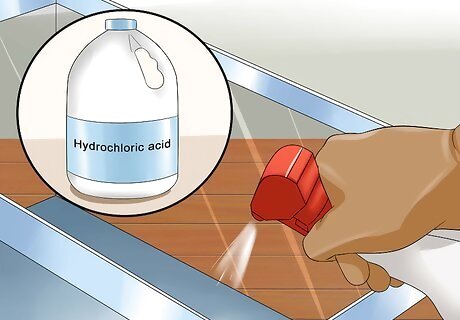
Disinfect the tanks. To prevent the spread of the disease after the fish has been treated, be sure to sanitize all tanks. This can be achieved by the use of dilute hydrochloric acid or potassium permanganate. Both are available at aquarium specialty stores and possibly pet stores that cater to aquarists. Be sure to follow instructions for use in sanitizing fish tanks—let stand in the tank with water for two to three days, then thoroughly clean and sanitize the tank. Refill the tank after sanitization and restart filtration system to get water back to normal for fish.



















Comments
0 comment